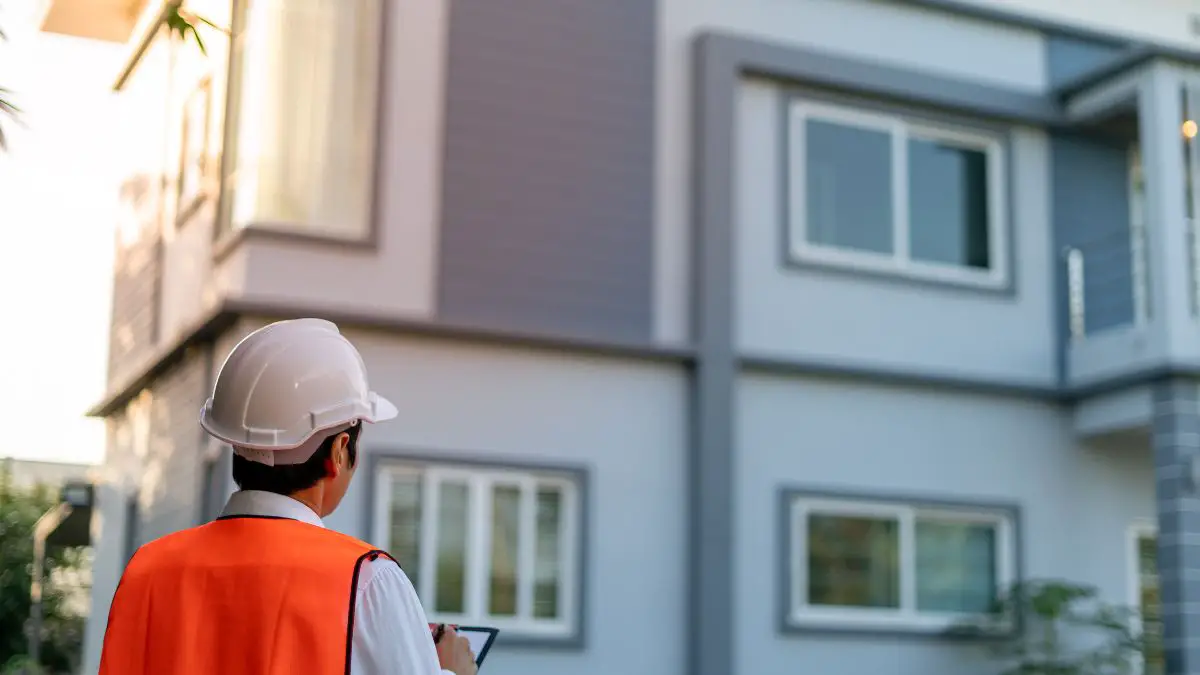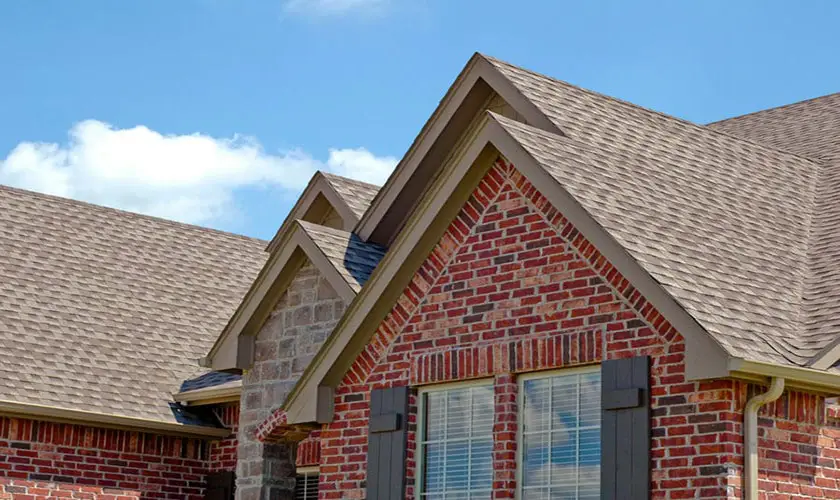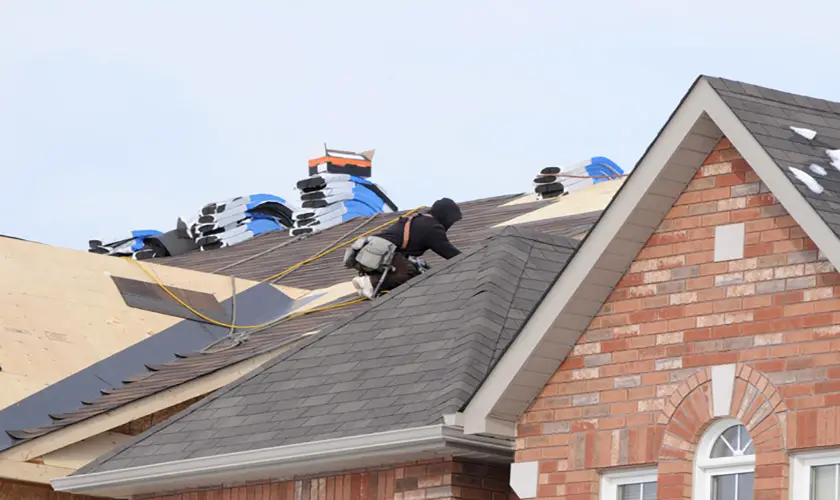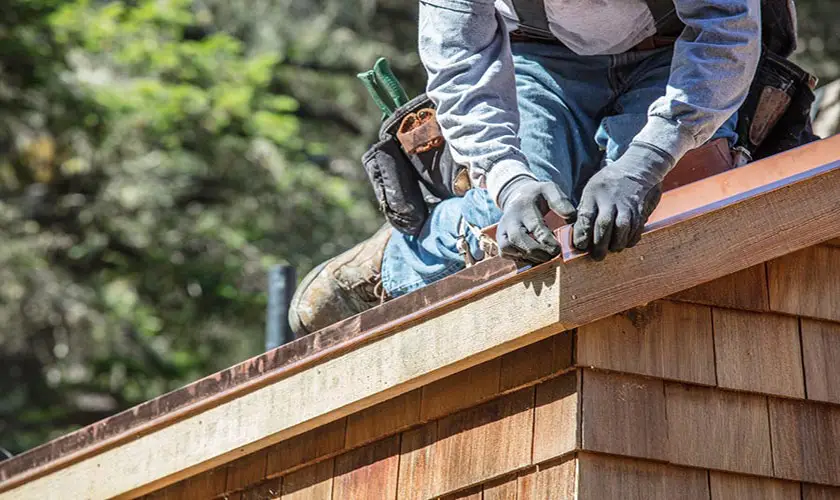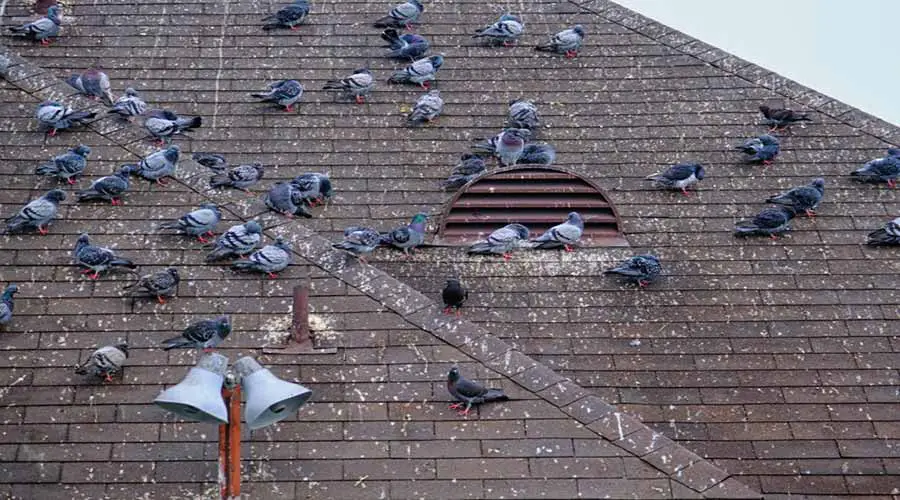
As a home inspector, checking the roof is part of my job. And one important thing I noticed that homeowners often overlook is the roof sheathing. But it’s easy to see why as the roof sheathing is not visible from the outside. It’s like the layer of fat on a human’s anatomy offering protection to the nerves. You know it’s there, but you have to cut deep into the skin to see it.
Roof sheathing (aka roof decking) is a layer of material on top of a home’s rafters that forms a solid roof deck. Usually constructed of 4’x8′ pieces of plywood or OSB, roof sheathing is critical for the roof’s structural integrity and provides an uninterrupted surface for installing the outer roofing materials.
A roof sheathing is not only a significant investment, but it is also one of the most important aspects of a home as it defines whether a house will last longer or not.
In this article, I’ll share with you everything I learned about roof sheathing from years of inspecting roofs.
What are the Different Types of Roof Sheathing?
As a homeowner, there are two crucial aspects of a home that you must always consider before you sign on the dotted line: the roof and the foundation.
While your home needs to have a solid foundation, it is crucial that the roof sheathing is installed correctly on the house.
Like any other building material, roof sheathing mostly comes in the standard size of 4×8 feet and in various materials that range in quality and thickness. The only similarity is that most of them are made from wood.
For roof sheathing to get the quality mark, modern technology and engineering put together a material that must be graded for exposure in exterior use.
Here is a list of roof sheathing materials available in the market:
- Plywood
- Oriental Strand Board (OSB)
- Concrete Roof Sheathing
- Exterior Gypsum Board
- Wafer Board
Plywood
Builders and homeowners consider plywood as one of the best and most popular roof sheathing materials. That is because it is way stronger and lasts longer.
Plywood is made of small pieces of softwood timber glued and compressed together using a pressing machine to form a solid layered sheet.
Plywood is considered heavy-duty, unlike other sheathing materials, because it can take on heavier roofing materials such as concrete and slate.
In size, plywood sheathing comes in a four by 8 feet board or panel and ranges in thickness of ¼”, ½,” and ¾.”
There are two types of plywood in the market: plywood meant for construction and plywood that carpenters use to make cabinets and other furniture. You must buy suitable plywood for the project.
The sheathing plywood is also used on walls and floor structures and is easily identified through its rough surface.
One of the advantages of plywood for roofing is that water and moisture cannot easily penetrate through the compressed materials; hence, it will last longer.
Concrete Roof Sheathing
As the world grapples with climate change, industrial technology is beginning to lean on environmentally friendly construction alternatives, and concrete roof sheathing is an excellent option.
But aside from that, concrete offers a combination of high-level strength and support to specialized roofs that handle heavy loads. Concrete sheathings are applied on-site, where concrete is poured onto a precast board on top of the roof then left to settle and dry.
It is still not widely used, but it provides a more robust protection to the roof against the elements brought about by the change in weather conditions.
Oriental Strand Board (OSB)
In the beginning, the roof sheathing consisted primarily of wood boards, then plywood took over, and wood boards became a thing of the past. In the recent past, however, roof decking has seen the universal use of OSB, which is slowly replacing its predecessor.
The oriental strand board is also commonly referred to as the chipboard, and just like in the case of plywood, it is made of assembled wood chips that are bonded together using a specialized adhesive.
OSB boards are commonly used in roof sheathing and subflooring but are much cheaper than plywood.
Exterior Gypsum Board
Exterior gypsum materials are not as famous as plywood or OSB, but several builders and homeowners prefer it for its versatility. You can use it to decorate the inside of the home.
Gypsum boards are available in the sizes 1/2″, 4″, and 5/8″ and are used in residential and commercial roof sheathings as they are specifically designed to be installed on exterior surfaces.
Gypsum boards are respected for their fire resistance capability and are laminated on both sides with water-resistant paper.
Wafer Board
Wafer boards are made of wood flakes and are closely related to OBS but are made to incline more on the qualities of plywood. Wafer boards are more robust and much firmer.
Is Roof Sheathing Necessary?
Roof sheathing makes your roof strong, and that makes it necessary for almost any home construction. A building can only be complete when it has a roof over it, but a roof is not quality if it is not strong.
The roof’s structure is comprised of rafters and trusses of different sizes, e.g., 3×2, 4×2, and 6×2 wooden frames that are spaced on intervals of between 16″ and 24″ apart in both length and breadth.
Most roofing materials come in the form of asphalt shingles or tiles, and because they are smaller in size and are laid nearby, the tiles won’t have the base to apply on if the roof does not have a sheathing.
But as much as homeowners only think of a roof sheath as the surface for holding shingles and laying out tiles on the roof, a roof sheathing has several benefits as an added advantage:
1. Provide Base For The Roofing Material
The roof sheathing provides a base for the roofing material. It is common knowledge and the reason for buying the roof sheath in the first place. The roofing material needs something underneath that the nails will drive through and hold firm.
2. The Value Of Integrity
The roof sheath provides integrity to the structure and the house at large. The strength and stability to withstand adversity will earn respect and be approved as safe to dwell in or work. A roof sheathing will add strength and provide a barrier to water and moisture from seeping through the roofing structure.
3. Provides Uniformity
Because a roof sheathing has an even surface, it ensures that the roofing material has the same consistency. The weight of the trusses and the roofing material is evenly distributed throughout the roof, and no one side is disadvantaged.
4. Provides Barrier To Roof Damage
The sheath acts as the final form of barrier against elements and damage to the roofing material.
Even when damage occurs to the roofing material, the roof sheath, in most cases, is solid and waterproof, so it will take a while before water and moisture penetrate the board. Hopefully, proper repairs will is carried out by then.
Plywood Roof Sheathing vs. Oriental Strand Board (OSB)
The two types of roof sheathing are almost the same, where they are both made from scraps of wood that are compressed and held together by specialized adhesives.
Their differences, however, vary in size, quality, and appearance.
Plywood Roof Sheathing
| Pros | Cons |
|---|---|
| Not easily susceptible to water and moisture | More expensive |
| Has a good appearance | Not eco-friendly |
| Can be painted | |
| Better quality |
Oriental Strand Board (OSB)
| Pros | Cons |
|---|---|
| Cheaper than plywood | Susceptible to water & moisture |
| It has a variety of uses | Laminated, hence cannot be painted |
| Larger boards/panels are available | You cannot use it as subflooring |
| Eco-friendly |
What Is the Best Roof Sheathing?
Oriental Strand Board is currently the best roof sheathing. The future is OSB.
As time goes, new roof sheathing brands come into play. As industry players are looking at the affordability and longevity of roofing materials, one material will try to outdo the other.
When a product enters the market, it is presented in the best forms for homeowners and builders to choose from a variety.
In the recent past, 50% of builders and homeowners preferred OSB over the rest of the roof sheathings available today. It is because OSB offers the same quality as plywood and at a much lower price.
But plywood, as much as it is expensive, still overrides OSB as a superior roof sheathing material.
One is because the plywood is much stronger than the latter, and two is because the plywood is also superior in protecting your roof against water and moisture, which are the greatest enemies to sound roofs.
The conclusion is that the plywood takes home the trophy as far durability and integrity of the roof are concerned.
Also, see our article on the energy-efficient radiant barrier roof decking.
How Much Does Roof Sheathing Cost?
During roofing, roof sheathing is priced cumulatively with the rest of the roofing work. You cannot have one contractor lay down the skeleton and another layout the roofing material.
But before the labor charge agreement, the roofing contractors will know which roof sheathing material to use.
Wood, Concrete, and Steel are priced differently. But different wooden materials could be priced the same as they are made from the same material, have the exact measurements, and even the same thickness.
The difference between the OSB and plywood costs around $50-$60, where OSB could cost $600 and plywood $660. It is the cost of installing 500 square feet of roof.
How Do I Know If My Roof Sheathing Is Bad?
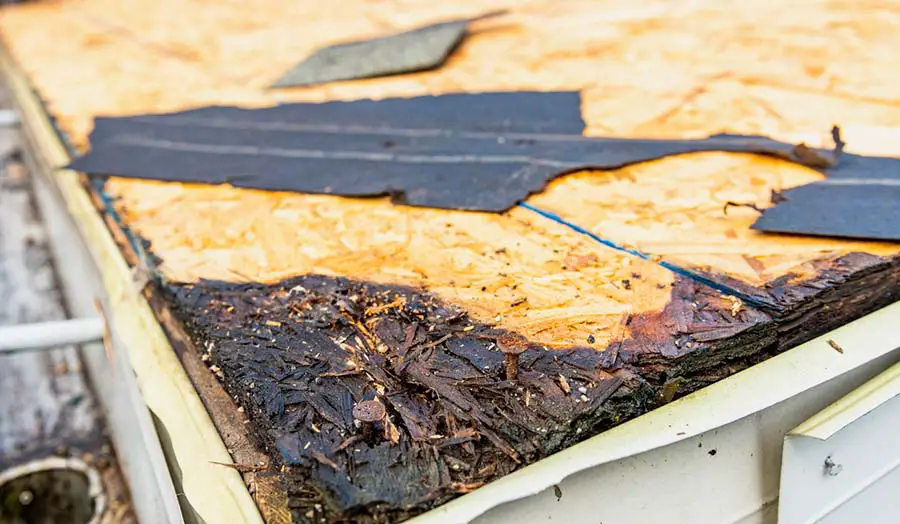
Checking for damages on your roof sheathing will let you know if it’s in bad shape. Like any other roofing material, roof sheathing gets damaged and may need repairing or replacing.
Roof sheathings come in wood, concrete, and steel materials. The last one, the steel sheathing, is unlikely to sustain damage because it is high-quality and durable steel.
On the other hand, concrete is good and can last long without much maintenance or repairs, especially if the sand, the cement, and the waterproof material are mixed in the correct ratios.
When the cement is not enough, the concrete mixture becomes porous, and water will eventually seep through, and the sand making up the concrete will start to peel and fall.
In wooden roof sheathings, the damage is inflicted through moisture, high temperatures, and pests which are easily noticeable when you see:
- Sagging of the roof indicates that the roof sheathing has taken in so much water and is no longer solid, and it is a sign that the roof sheathing is rotted and the roof is caving in.
- The growth of moss on the rooftop and molds inside signifies that the roof sheath harbors moisture that the moss and molds feed.
- The attic leakage shows that sheathing is damaged and has a gap somewhere where water is leaking.
- Light streaking or seeping through the roof in the attic proves that the roof sheath has dried out and shrinks due to high temperature and therefore needs replacing.
Roof Sheathing Solutions and Precautions
In overall home maintenance, checking the roof regularly from outside and inside could ensure that you intercept a problem or damage as soon as it occurs or appears.
When a roof damage repair is done in time, further roof damage is diminished, ensuring that the roof stays in good condition for an extended period.
It is good for you as the owner and is also suitable for the property as damage to the roof sheathing could dictate that the entire roof replacement be done, which could inconvenience you a big deal.
Is Sheathing the Same as Plywood?
It is a very valid question in all respects, but roof sheathing cannot be the same as plywood.
They are different because roof sheathing is the word used to refer to the process of protecting the roof, while plywood is one among many of the materials installed to provide roof sheathing or protection to the top.
The former is the process, and the latter is a product. Many people confuse them mainly because plywood roof sheathing was a popular product that everyone was applying on their roofs.
In its way, the plywood material became a big part of the roof sheathing; therefore, many understood it as the same.
But now, other materials are emerging to be more popular than plywood, e.g., OSB, concrete, and steel.
Is Roof Sheathing the Same as Roof Decking?
Many people wonder what the difference is between the roof sheathing and the roof decking on a house. They are the same because roof sheathing is also known as roof decking.
Trusses and rafters on a roof amount to a mere skeleton; a skeleton needs meat to be considered. In this case, the roof sheathing seals the spaces and adds a solid face to the structure.
The roof comprises three layers; the skeleton, the center core, and the roofing material. The roof sheathing is sandwiched between the structure and the shingles and offers base and protection to both.
Final Thoughts
As roof sheathing is essential for the structural integrity of your home, you should hire an experienced roofer to handle the job. These professionals will consider your building’s structure and advise you on the best roof sheathing to choose.
It is because a roof sheathing will define the roof lifespan regarding structural failures and weather-induced damage.
Roof problems, especially those brought about by inferior roofing materials, could ruin your house for good, rate your investment as bad, which makes selling it a pickle, and your insurance could go to waste.



